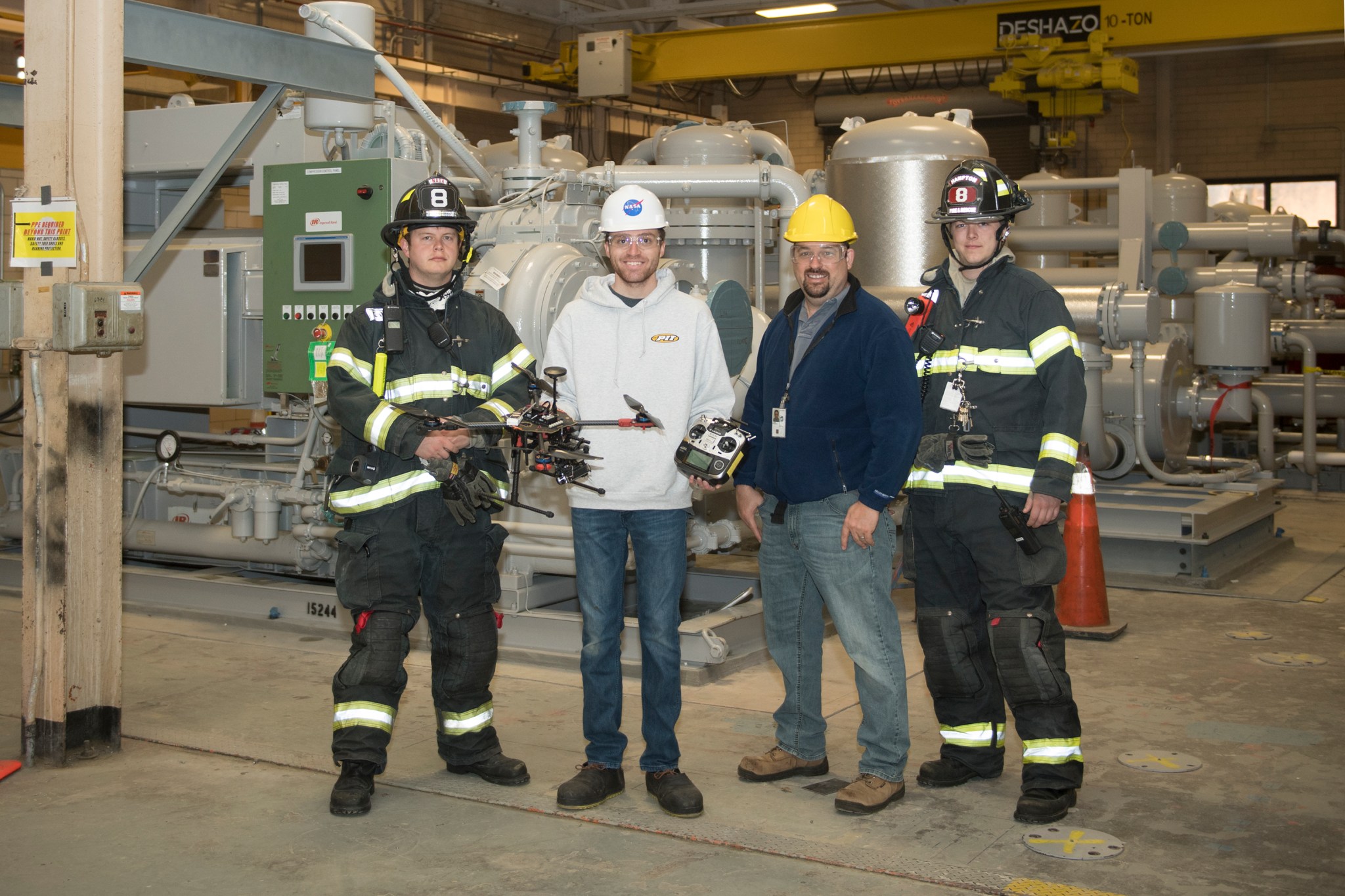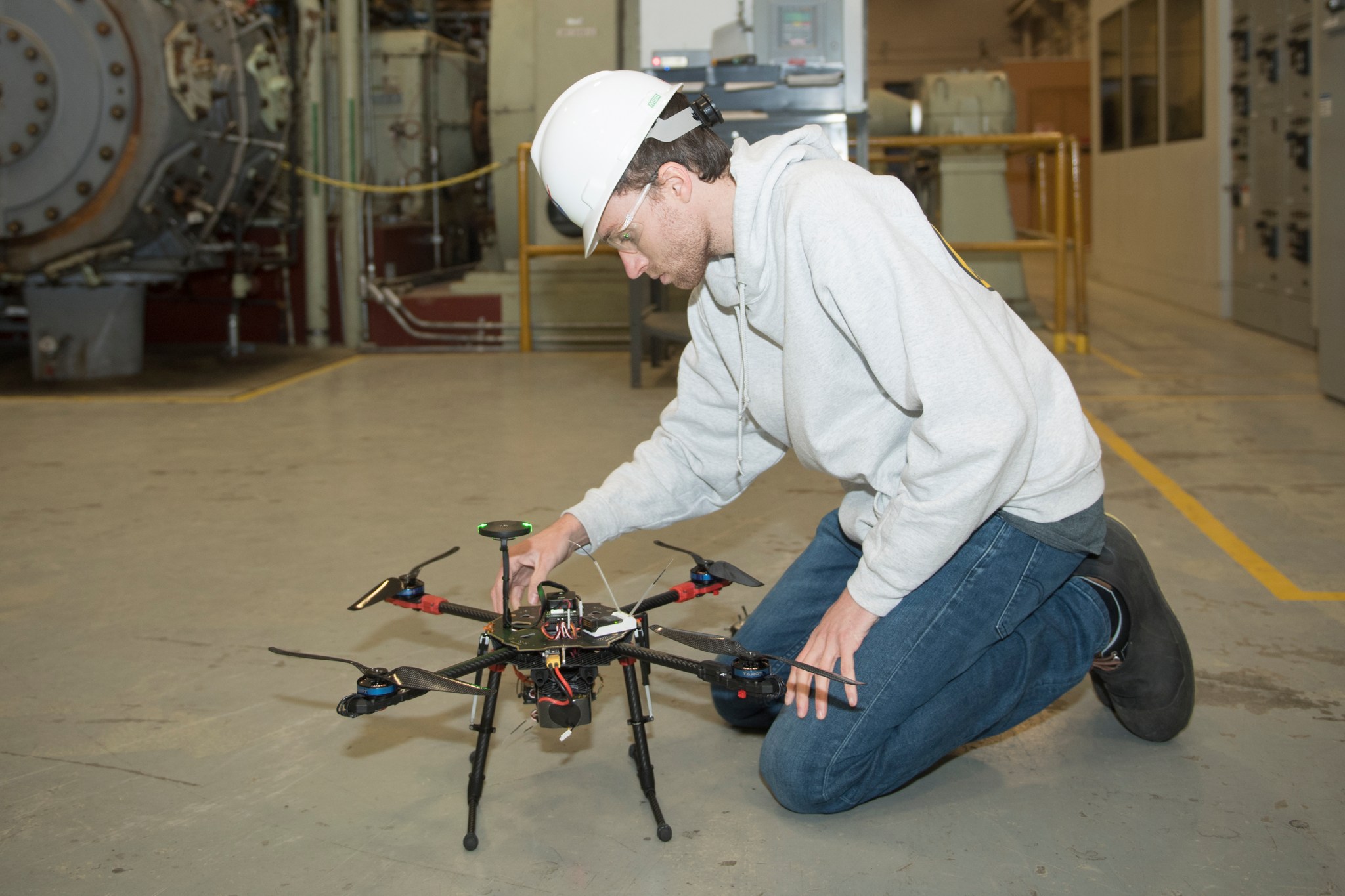When facility engineer Stuart K. Cole wanted to take photos of equipment inside the cavernous compressor station he works at, he decided to try something different than using a crane with a photographer aboard.
Instead, an aerial drone with a high-definition camera attached was deployed to navigate a landscape of high-pressure air compressors the size of large SUVs inside the facility at NASA’s Langley Research Center in Hampton, Virginia. Using the station’s massive overhead sliding bridge cranes posed too many challenges.
“That was getting to be a little complicated,” said Cole, whose Subsonic/Transonic Testing Branch is part of Langley’s Research Directorate.
That’s where facility safety head Dale Noble chimed in. “Why don’t you use a drone?” Cole recalled him saying.
Working with photographer Harlen Capen and unmanned aerial vehicles experts Zak Johns and Danette Allen, they devised a plan to get the job done with minimum impact on operations or safety.
“The photo session was conducted using the drone inside the building on the weekend, when no rotating equipment was in use,” Cole said. “It all seemed to come off really well.”
The images will be used for training new employees, and as a way to monitor compressor health continuously, showing critical parts. The work will support using augmented-reality to virtually hover over equipment for data analysis.
“We have so many sensors on the equipment that when you’re trying to train people where things are, it gets to be an issue,” Cole said.
Station Transformation
Cole said the use of drones is just one of the ways the compressor station is being transformed from a vintage facility – it was built in 1952 – to one that uses the latest technology.
“This is an active test bed for current and future digital transformative technologies,” he said. “Research continues so we can apply lessons learned from these state-of-the-art and affordable technologies, like the use of drones and augmented reality.”
“It’s a big operation, supplying the aerodynamic research needs of 22 wind tunnels scattered across Langley’s 764 acres,” said Tom Mills, the facility manager. “The system is run from a 35,000-square-foot building, with an adjacent 115,000 cubic feet of high-pressure air storage.”
The station has two existing compressors and two new ones being installed. They are each capable of producing 6,000 pounds-per-square-inch of pressure with their 4,000-horsepower motors.
Needless to say, they are large. Each compressor, Cole said, “is as big as at least six cars stacked on top of each other.”





























